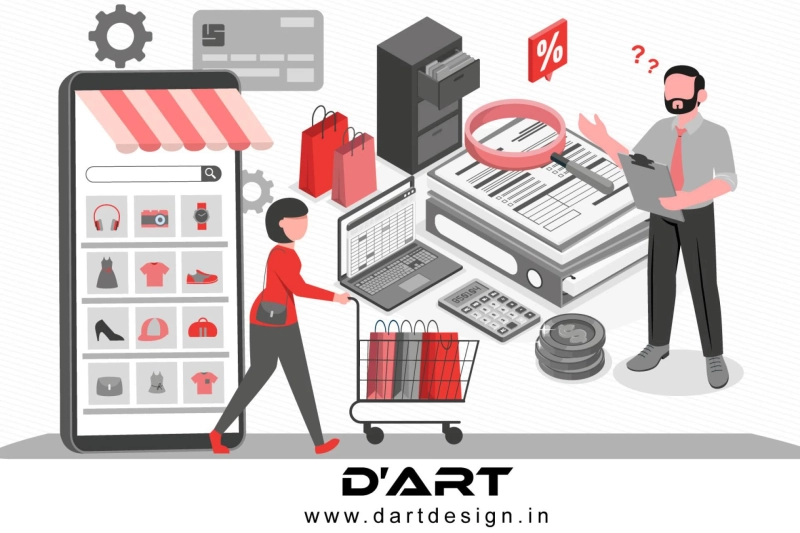A solid retail audit plan must be created and put into place if suppliers are to remain competitive in today's market. The most effective technique for a merchandiser to get crucial field data that influence the health of their business and its products is to use retail audit services.
To remain competitive in the market today, suppliers need a solid retail execution plan. Retail audits and inspections are the simplest approaches for a retailer to get crucial field data that influence the health of their company and its products.
Business owners and managers may determine what works and what doesn't by evaluating longitudinal data to make better-educated decisions and changes to their retail strategy.
In this article, we'll go over everything you need to know about performing retail audit services and retail solutions and how to utilize the information you learn to make future business decisions that are better informed.
What Is A Retail Audit?
Retail audits are investigations of specific retail locations carried out by brand representatives or retail shop staff to gather information regarding the condition of the brand's merchandise.
Types of information include:
Sales amountStock standingDescriptions of promotional items and in-store displaysPricing strategies used by competitors Product locations in storesProduct damageWhy Is It Important?
Conducting retail audits has two advantages. On the one hand, they help suppliers monitor retailers' adherence to previously made arrangements about product placement, price, and marketing. On the other hand, they make it possible for brands to precisely assess their success in the retail market.
Here is some importance of retail audit:
PARTNER COMPLIANCE:
These tests assist brands and suppliers in making sure that their retail partners are adhering to the partnership's agreed-upon conditions.
Data on the price, advertising activities, retail planogram, and product positioning aid in confirming compliance. Additionally, audits support the development of a good rapport with partners and shop managers.
ACCURATE DATA COLLECTION:
Due to the nature of the retail business, third parties are typically used to collect data on sales activity and procedures.
Retail audits gather accurate and trustworthy data directly from the customer for the supplier to enable them efficiently discover strengths, fix errors, and strengthen weaknesses.
OPERATIONAL ISSUES:
Suppliers may better understand important facets of their production, distribution, and supply-chain operations by evaluating how their products are exhibited and sold in retail settings. These audits aid in identifying the root causes of problems with retail audit and maintenance, operations, transportation, and quality.
BETTER CONSUMER INSIGHTS:
To comprehend the experience that customers have when visiting a business, retail audits are crucial. They track consumer engagement levels and assess how this experience might be made better.
DATA-DRIVEN BUSINESS DECISIONS:
Making educated and data-driven business decisions are made possible by all the insights gleaned from the aforementioned data pieces. These choices could have to do with consumer interaction, price, design, visual merchandising, and other things.
How Does The Retail Audit Process Work?
How can your business ensure that it is carrying out retail audits correctly now that it is aware of its intrinsic value? To ensure that your team gets the most out of each store visit, take into account the following method:
DESCRIBE YOUR OBJECTIVES:
Establish the primary goals for your retail audit. Are you mostly interested in keeping an eye on what your competitors are doing? Or do you consider how rapidly your goods are being pulled off the shelves?
Specify in writing what you hope to gauge through the audit, and give each objective a numerical or qualitative value as a gauge of success.
MAKE APPOINTMENTS:
Once you are clear on your goals for the retail audit, it is time to put those goals into action. When choosing which accounts to send to, try to be consistent. Individual salespeople may develop a relationship with store management and become incredibly informed about their stores in this fashion.
Recognize that certain stores may desire advance notice before representatives visit their location. Remember to plan reps for the right number of audits according to their designated region.
COLLECT INFORMATION AND IMAGES:
Ensure that the data your reps gather directly relates to the objectives and standards you've established. If some retail survey questions are crucial to the goals of the organization, it could make sense to classify them as "mandatory."
A fantastic method to show precisely what is occurring in a business at any one time and to encourage responsibility and compliance is to use images in audits. Review the data collection methods used by salespeople and think of ways to improve them, ideally with software.
RESULTS EVALUATION:
After audits are finished, arrange your data in a way that is simple to understand. Graphical representations of numerical data are possible, whilst tags for notes can be used to categorize them. Compare the outcomes you've obtained to your chosen KPIs to see how they compare.
REPEAT THE PROCEDURE:
After carrying out several retail audits, you'll be able to modify your retail audit services as necessary to suit the particular requirements of your business. By performing audits regularly, your company will be able to react quickly to the retail environment's constant change.
Takeaways:
A retail audit may be used to evaluate the performance of your whole retail execution strategy. The quality of the audits, however, has a significant impact on the value of the insights they yield.
Now, consider how your company might improve its retail audit process by organizing the data collecting, analysis, and scheduling processes. Spend the time that is required to analyze your results to make the auditing process useful. It also provides your business the ability to make quick, educated choices.


